
We learn a little about Uji City and its famous tea and also try green tea sweets by Uji-born celebrity pastry chef Toshi Yoroizuka!
Uji is a quaint city located on the southern outskirts of Kyoto, only about 20 minutes away from Kyoto Station by express train. The area is famous not just for its world heritage tourist attractions but also for its production of superb tea, known as “Uji-cha,” literally, “Uji tea”.
Earlier this month, the Uji Tourism and Souvenir Association held a promotional event at the Shibuya Hikarie shopping/dining complex in Tokyo featuring a talk between star pastry chef Toshi Yoroizuka and Shigeki Koyama, who holds the unique title of Uji-cha Dendoshi, which literally translates to “Uji Tea Missionary” or “Uji Tea Evangelist.” Naturally, the session was to include a tasting of one of Chef Yoroizuka’s sweet creations using Uji green tea, and happily for us, we were lucky enough to win a seat at the table.
For the promotion, a lovely stage (featuring the color of green tea, of course) was set up in one of the open areas of Hikarie.
They also gave us plenty of brochures and maps with glossy pictures and illustrations containing information on both the Uji area and Uji tea. The material included guides on what to see in Uji, such as the Byodo-in Temple and the Ujigami Shrine, both registered UNESCO World Heritage Sites since 1994, as part of the collective “Historic Monuments of Ancient Kyoto”.
We actually see images of Byodo-in Temple literally everyday, as it is portrayed on the reverse side of the Japanese 10-yen coin. Further, the phoenix illustrated on the back of the Japanese 10,000 yen bill is also based on the statue that rests on the roof of the building.
Chef Yoroizuka described Uji as a beautiful city with a relaxed atmosphere, with everything located in a small enough area that you can easily explore the city on foot. The presence of green tea is everywhere, and there are many casual tea houses where anyone can enjoy tea without any formality at all. He recalled that at the grade school he went to, there was even a faucet from which you could drink green tea, which he didn’t know was something uniquely local until he moved away from Uji!
▼ Chef Yoroizuka talking about his experiences growing up in Uji.
Next, Koyama spoke about the tea in Uji and his work promoting the product.
Koyama explained that he is one of seven “Uji Tea Evangelists” currently appointed by the governor of Kyoto Prefecture to promote Uji tea to the rest of the world as part of Kyoto Prefecture’s efforts to seek world cultural heritage status for its tea. He told us that tea production in the Uji region began around 800 years ago, and that the area has counted emperors and shoguns among fans of its tea over the centuries. Kyoto may not produce as much tea as Shizuoka Prefecture, the biggest tea growing region in Japan, but the people of Uji like to think that their tea is second to none in quality.
With that, it was time to try some green tea flavored sweetness, as Yoroizuka dazzled us with three new sweets he had specifically created using Uji tea!
The treats were presented to us by two lovely ladies dressed in traditional tea farmer garb.
Of course, the best part was that we got to try a sample of one of the confections called the Ujigawa (“Uji River”).
The sweet was basically a green tea mousse made from Uji tea topped with whipped cream and white chocolate. Just look at that beautiful green color!
It was gorgeous viewed from above as well!
Ahhh…that green softness looks so inviting! And yes, the flavor of Uji tea was fresh enough to prevent the cake from being too sweet, even with the cream and chocolate on the top. Plus, the texture of the mousse was as smooth as it looked.
The sample we received was specially made as a small portion, and this is what the actual Ujigawa looks like as a product.
We also got to see Yoroizuka’s two other Uji tea cakes. This is the Ujizakura (“Uji Cherry Blossom), a roll cake filled with plenty of Uji tea cream and topped with a thick layer of sakura-flavored cream.
And this is the third Uji tea cake Yoroizuka displayed, named Enishi, which means “fateful bond or connection” in Japanese. It’s a petit-sized tart artfully filled with a soft Uji tea mousse and flavored with a bit of rhubarb.
Chef Yoroizuka commented that while green tea is certainly an attractive ingredient to use in sweets, there are elements that make it delicate and somewhat difficult to handle. Firstly, there’s a fine balance when heating cakes containing green tea, as adding too much heat can cause the flavor of the tea to dissipate. Also, while green tea appears as a vibrant green color while fresh, it looses its color quickly once exposed to light, so ideally, these confections need to be consumed very quickly.
We also learned about a new type of green tea called tengyoku, which is a combination of tencha, a kind of steamed green tea that is ground to create matcha powder, and gyokuro, the valuable shade-grown tea which is the most prized of all Japanese green teas. In case you’re wondering just how valuable gyokuro tea can be, Koyama-san told us that while 100 grams (3.5 ounces) of a typical gyokuro might be priced at 5,000 yen to 8,000 yen (US$44-$71), 100 grams of the most precious gyokuro could sell for as much as 100,000 yen!
Tengyoku is a new creation that hasn’t been released for public sale yet, and since they said it was difficult getting the balance of tencha and gyokuro just right, we’re guessing the recipe for the mixture is a trade secret. The tea we had here was brewed from cold water, which made it extra refreshing, and there was an elegant, subtle sweetness to the tea.
The presentation, which lasted for about an hour, finished with Yoroizuka commenting that he hopes more and more people make a habit of enjoying traditional Japanese tea casually and incorporating it into their daily lives, to which Koyama added that it’s wonderful for the tea industry that green tea is now receiving such recognition as an ingredient for sweets, as this has become a new source of demand for tea.
With those remarks, the event which we thoroughly enjoyed was over, but since we’d only tasted one of the green tea sweets, we decided we had to try at least one more. So, we then promptly made our way to Yoroizuka Farm, Chef Yoroizuka’s shop in the Hikarie complex.
Sure enough, we found the green tea confections in the showcase!
We bought the Ujizakura (priced at 531 yen) and were ready to try it right there at one of the dine-in tables in Hikarie.
Here’s the delicately beautiful Ujizakura cake, in all its green splendor!
The green tea cream looked divine, and we could also see some sweet red beans inside it too!
The cake looked like a work of art from above, too. The layer of sakura-flavored cream was topped with a dainty salt-pickled sakura blossom, as well as red beans on which a sliver of gold leaf had been placed.
And yes, it tasted as sublime as it looked. What was particularly pleasant was the green tea cream, which was not sweet at all but silky smooth and tasted distinctly of fine green tea. When that combined with the sweet sakura-flavored cream, it gave a whole new depth to the taste of the cake. The salted sakura blossom, of course, added a delightful dash of saltiness to the rich taste of the cream.
The dessert was a most satisfying end to the afternoon, and the fact that we got to learn a few things about the historic city of Uji was just icing on the cake! The promotion convinced us there’s much to see, eat, and drink in Uji, and the city certainly seems worth a visit. By the way, if you desperately want to try some of the Uji-tea sweets without traveling to Kyoto, they’re available for just a few more days until the end of March at Chef Yoroizuka’s shops in several locations around Tokyo, including the Shibuya Hikarie and Tokyo Midtown complex in Roppongi. However, the cakes available at each location sometimes differ, so you may want to check with the shop beforehand if you want to get your hands on the Uji tea sweets.
Images © RocketNews24

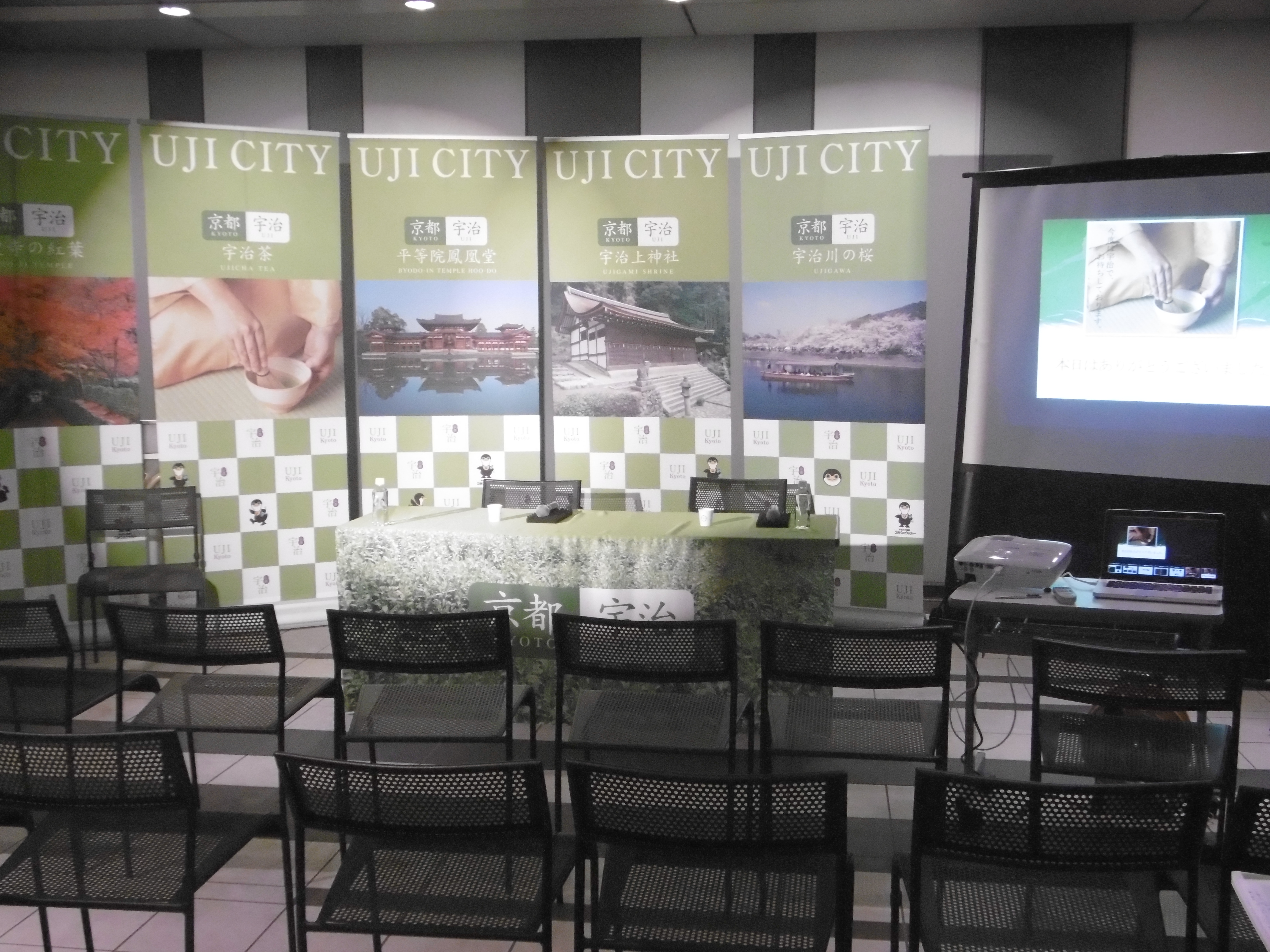
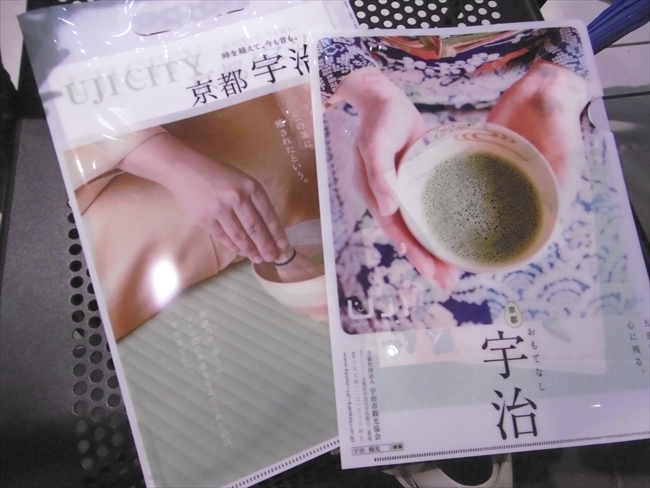
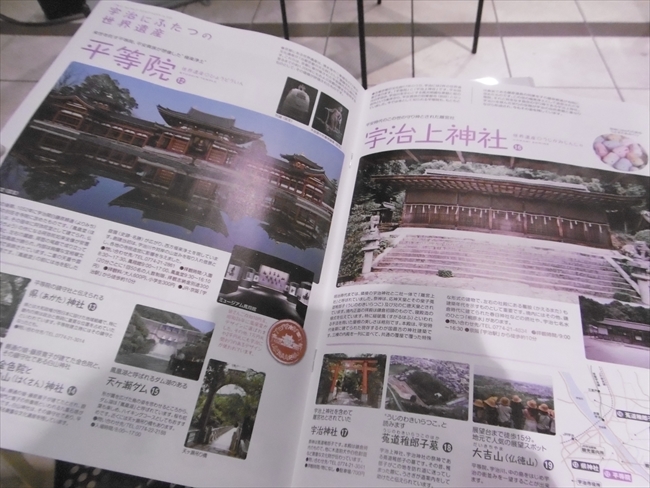
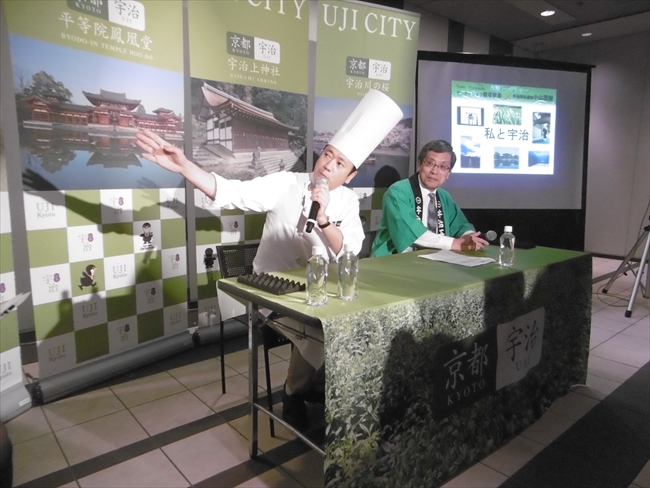


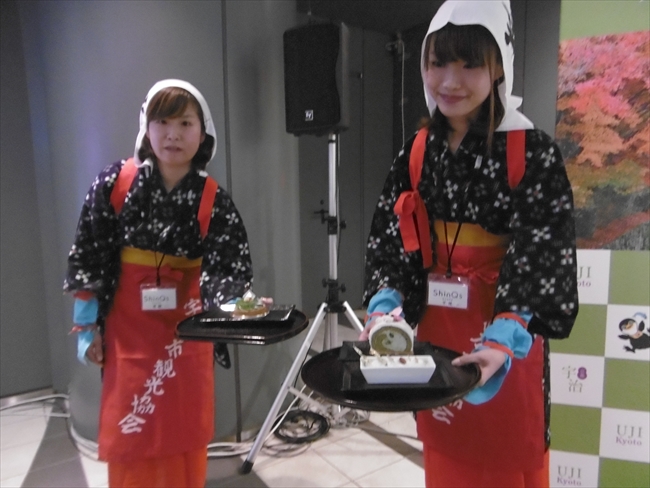
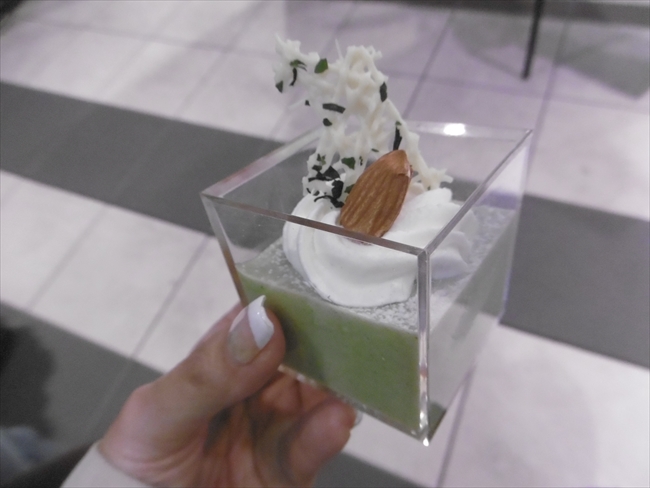
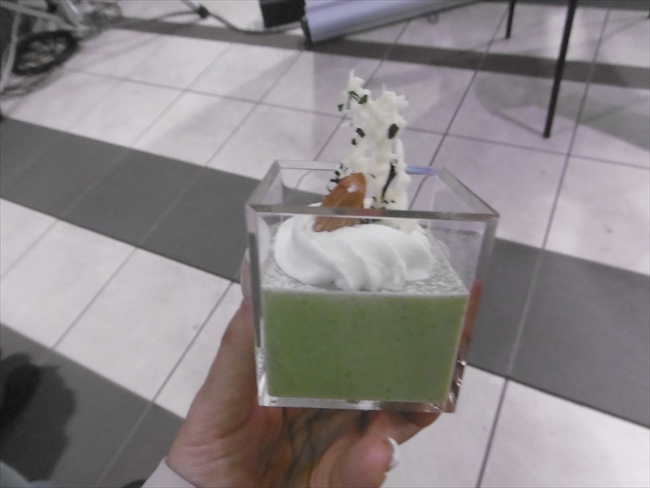
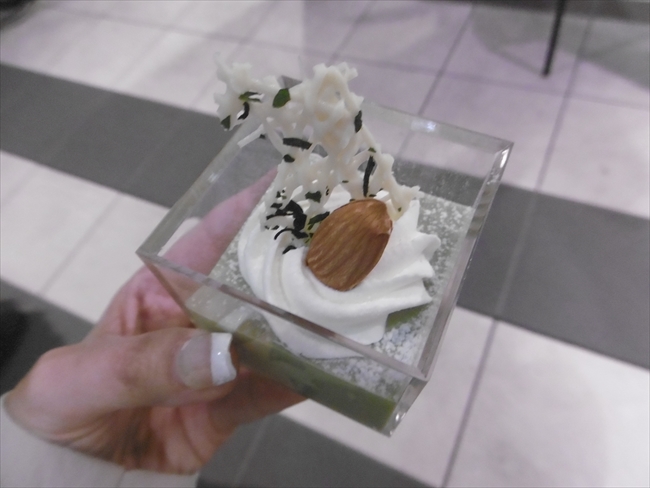
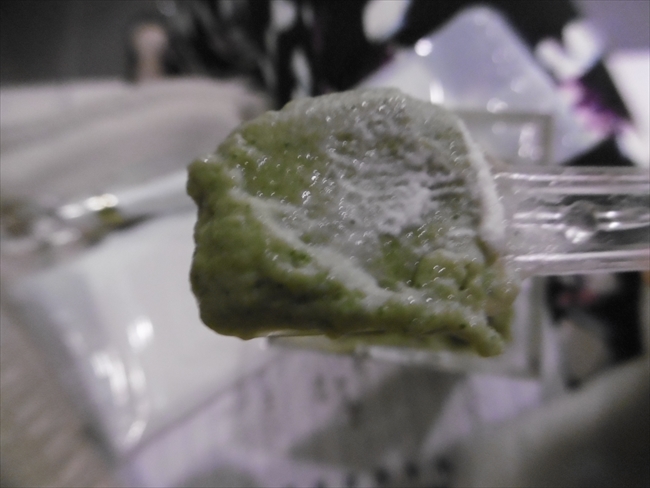
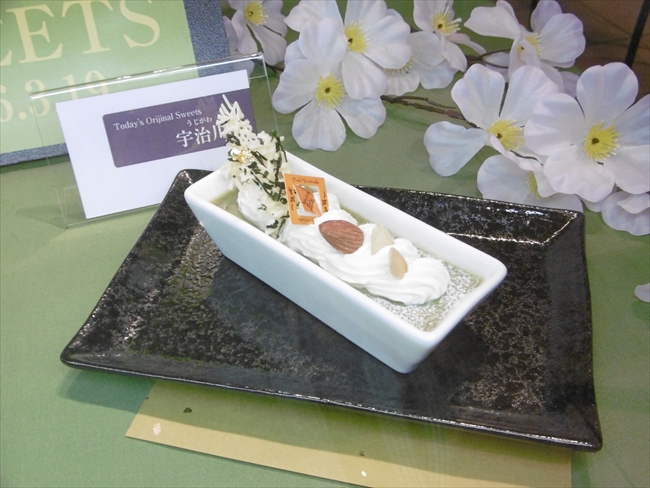
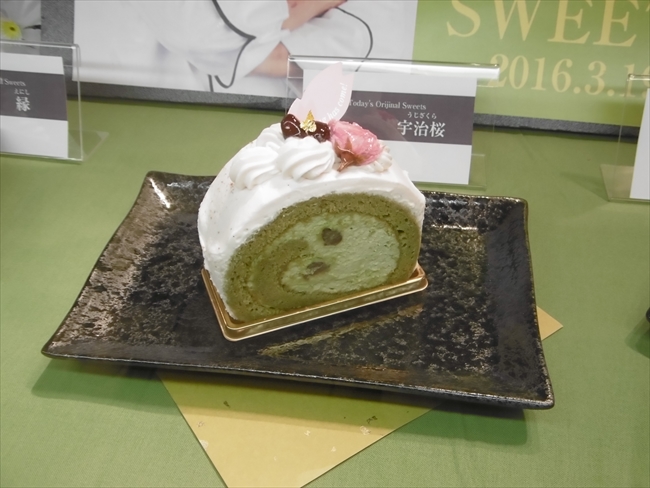
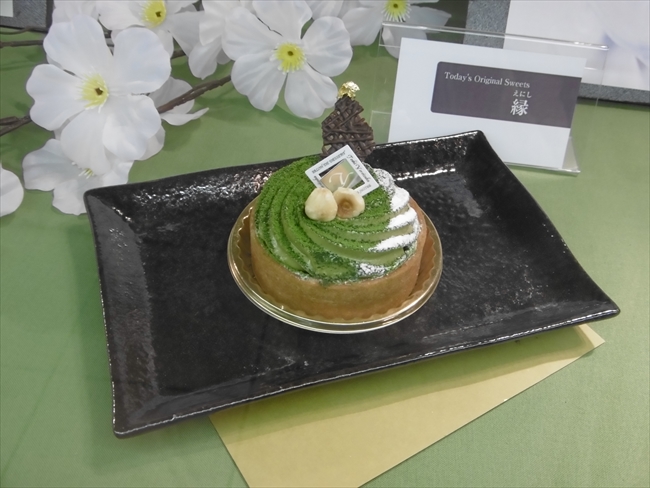
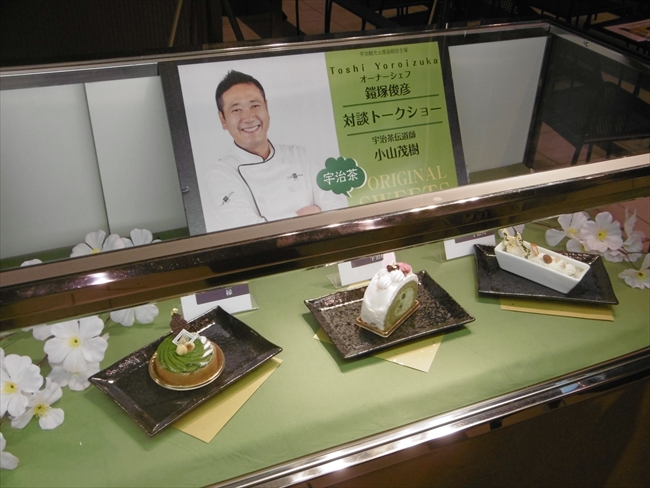
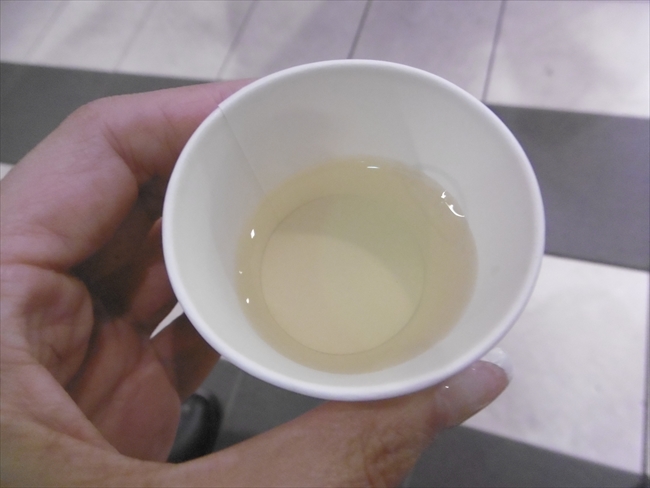
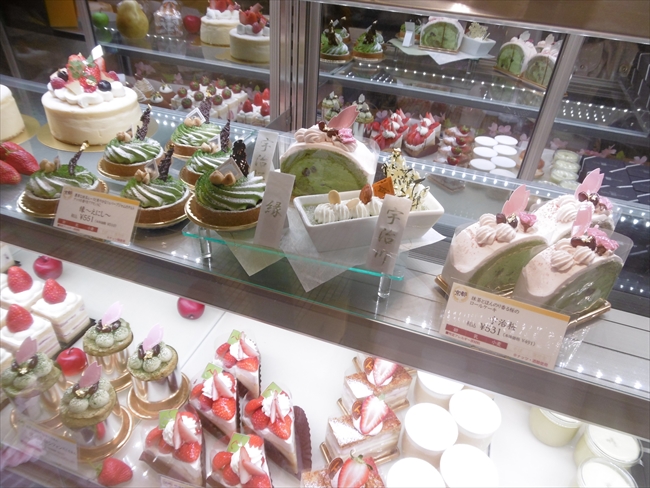
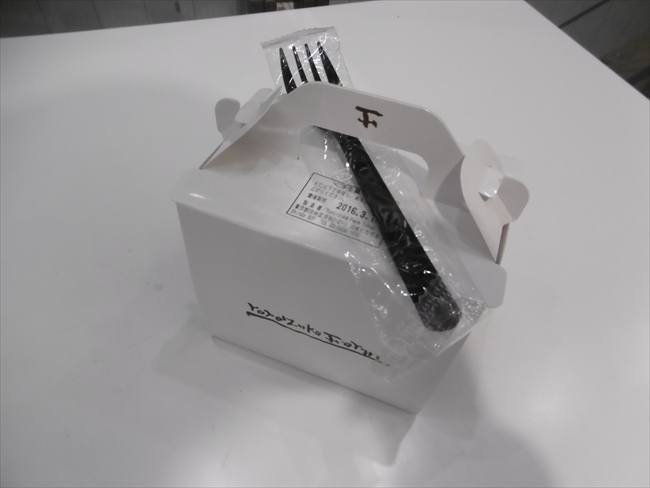
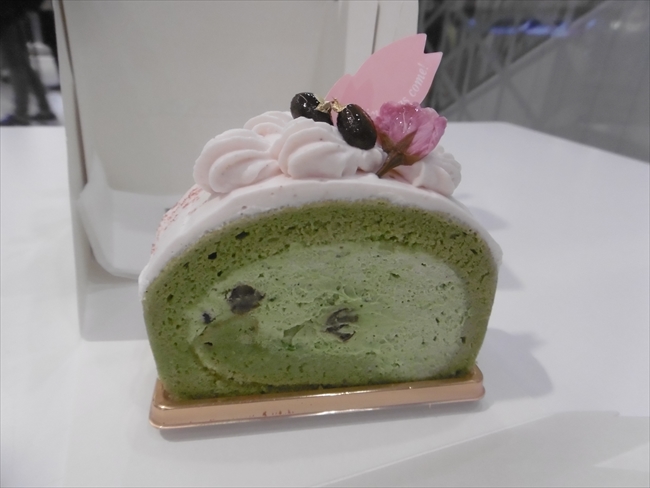
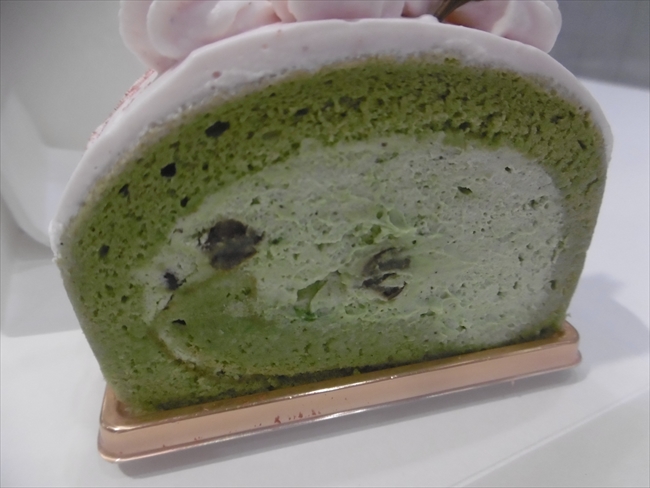
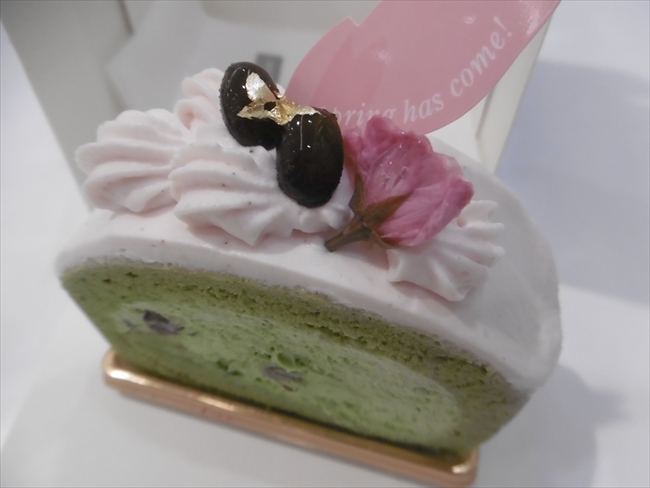

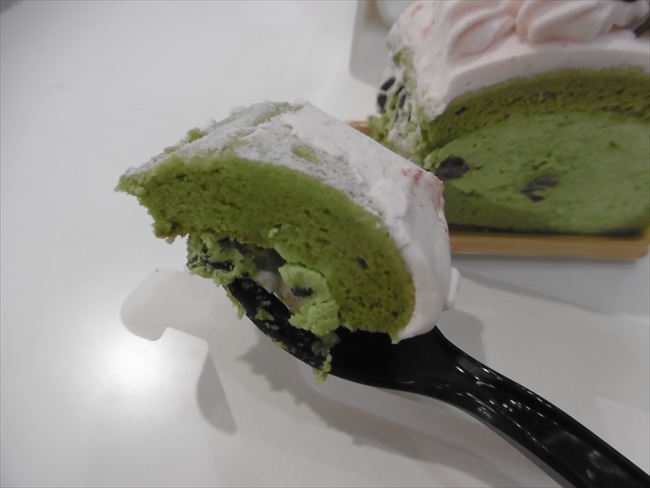
 We try renowned patissier’s honey-sweet creation available for just one day
We try renowned patissier’s honey-sweet creation available for just one day Master Japanese patissier reimagines the doughnut for new Mister Donut matcha series 【Taste test】
Master Japanese patissier reimagines the doughnut for new Mister Donut matcha series 【Taste test】 Mister Donut, Kyoto tea maker, and celebrity pastry chef collaboration yields beautiful results
Mister Donut, Kyoto tea maker, and celebrity pastry chef collaboration yields beautiful results Experience picking your own tea with a side of history at Chazuna in Kyoto’s Uji City
Experience picking your own tea with a side of history at Chazuna in Kyoto’s Uji City Sakura and matcha combine forces in new desserts from Kyoto’s Itohkyuemon
Sakura and matcha combine forces in new desserts from Kyoto’s Itohkyuemon Japanese beef bowl chain Sukiya’s 2026 Smile Box lucky bag basically pays for itself
Japanese beef bowl chain Sukiya’s 2026 Smile Box lucky bag basically pays for itself Play games, learn, and get your fortune at Ginza’s limited-time Tsunaguu “Shrine of the Future”
Play games, learn, and get your fortune at Ginza’s limited-time Tsunaguu “Shrine of the Future” Cup Noodle tries an authentic Jiro-style ramen, but something’s not quite right
Cup Noodle tries an authentic Jiro-style ramen, but something’s not quite right A visit to T-CAT, Tokyo’s often forgotten City Air Terminal【Photos】
A visit to T-CAT, Tokyo’s often forgotten City Air Terminal【Photos】 7-Eleven Japan starts new temporary luggage storage service in over 300 branches
7-Eleven Japan starts new temporary luggage storage service in over 300 branches Upskirt umbrellas are now a thing in Japan
Upskirt umbrellas are now a thing in Japan Japanese department store rooftop is a secret oasis where you can escape the crowds in Tokyo
Japanese department store rooftop is a secret oasis where you can escape the crowds in Tokyo Visit the birthplace of the Japanese daruma in Gunma Prefecture
Visit the birthplace of the Japanese daruma in Gunma Prefecture Chikura no Iwaya: Secret beach cave only appears for two hours a day, and here’s how to see it
Chikura no Iwaya: Secret beach cave only appears for two hours a day, and here’s how to see it Japan’s wildest Seijinshiki Coming-of-Age ceremony celebrates new adults in Kitakyushu 【Photos】
Japan’s wildest Seijinshiki Coming-of-Age ceremony celebrates new adults in Kitakyushu 【Photos】 Starbucks Japan ready to get Year of the Horse started with adorable drinkware and plushies【Pics】
Starbucks Japan ready to get Year of the Horse started with adorable drinkware and plushies【Pics】 7 great places to see Mt. Fuji from without having to climb it
7 great places to see Mt. Fuji from without having to climb it Cyberpunk anime meets traditional culture in Ghost in the Shell gold leaf Japanese changing screens
Cyberpunk anime meets traditional culture in Ghost in the Shell gold leaf Japanese changing screens Hayao Miyazaki says Happy New Year to Studio Ghibli fans with new art for Year of the Horse
Hayao Miyazaki says Happy New Year to Studio Ghibli fans with new art for Year of the Horse Hello Kitty Choco Egg figures are an adorable trip through three periods of Japanese pop culture【Pics】
Hello Kitty Choco Egg figures are an adorable trip through three periods of Japanese pop culture【Pics】 We found possibly the quietest Japanese-style hotel in Tokyo’s bustling Shinjuku district
We found possibly the quietest Japanese-style hotel in Tokyo’s bustling Shinjuku district 7-Eleven Japan’s ramen-cooking robot whipped us up a bowl of noodles【Taste test】
7-Eleven Japan’s ramen-cooking robot whipped us up a bowl of noodles【Taste test】 Sumo Sanrio! Hello Kitty and pals team up with Japan Sumo Association for new merch【Pics】
Sumo Sanrio! Hello Kitty and pals team up with Japan Sumo Association for new merch【Pics】 Japan’s oldest largetooth sawfish in captivity back on display in Mie Prefecture
Japan’s oldest largetooth sawfish in captivity back on display in Mie Prefecture More Than a Capsule Stay: Why Solo Travelers Choose “global cabin Yokohama Chinatown”
More Than a Capsule Stay: Why Solo Travelers Choose “global cabin Yokohama Chinatown” Disillusionment at Tsukiji’s tourist-target prices led us to a great ramen restaurant in Tokyo
Disillusionment at Tsukiji’s tourist-target prices led us to a great ramen restaurant in Tokyo Starbucks teams up with 166-year-old Kyoto doll maker for Year of the Horse decorations【Photos】
Starbucks teams up with 166-year-old Kyoto doll maker for Year of the Horse decorations【Photos】 Tokyo considering law requiring more trash cans following litter increase in heavily touristed area
Tokyo considering law requiring more trash cans following litter increase in heavily touristed area Tokyo’s Tsukiji sushi neighborhood asks tour groups to stay away for the rest of the month
Tokyo’s Tsukiji sushi neighborhood asks tour groups to stay away for the rest of the month Tokyo event lets you travel back in time, for free, to celebrate 100 years since Showa era start
Tokyo event lets you travel back in time, for free, to celebrate 100 years since Showa era start Sanrio theme park in Japan announces plans to expand into a Sanrio resort
Sanrio theme park in Japan announces plans to expand into a Sanrio resort Japan may add Japanese language proficiency, lifestyle classes to permanent foreign resident requirements
Japan may add Japanese language proficiency, lifestyle classes to permanent foreign resident requirements Stamina-destroying “Paralysis Noodles” are Tokyo’s newest over-the-top ramen innovation
Stamina-destroying “Paralysis Noodles” are Tokyo’s newest over-the-top ramen innovation Survey asks foreign tourists what bothered them in Japan, more than half gave same answer
Survey asks foreign tourists what bothered them in Japan, more than half gave same answer Japan’s human washing machines will go on sale to general public, demos to be held in Tokyo
Japan’s human washing machines will go on sale to general public, demos to be held in Tokyo Japan’s deadliest food claims more victims, but why do people keep eating it for New Year’s?
Japan’s deadliest food claims more victims, but why do people keep eating it for New Year’s? We deeply regret going into this tunnel on our walk in the mountains of Japan
We deeply regret going into this tunnel on our walk in the mountains of Japan Studio Ghibli releases Kodama forest spirits from Princess Mononoke to light up your home
Studio Ghibli releases Kodama forest spirits from Princess Mononoke to light up your home Major Japanese hotel chain says reservations via overseas booking sites may not be valid
Major Japanese hotel chain says reservations via overseas booking sites may not be valid Put sesame oil in your coffee? Japanese maker says it’s the best way to start your day【Taste test】
Put sesame oil in your coffee? Japanese maker says it’s the best way to start your day【Taste test】 No more using real katana for tourism activities, Japan’s National Police Agency says
No more using real katana for tourism activities, Japan’s National Police Agency says Starbucks Japan reveals new sakura drinkware collection, inspired by evening cherry blossoms
Starbucks Japan reveals new sakura drinkware collection, inspired by evening cherry blossoms Updated cherry blossom forecast shows extra-long sakura season for Japan this year
Updated cherry blossom forecast shows extra-long sakura season for Japan this year Cheap, casual restaurant Gusto offers beautiful spring sweets using gourmet Uji green tea
Cheap, casual restaurant Gusto offers beautiful spring sweets using gourmet Uji green tea Mister Donut gets fancy in team-up with Tokyo pastry chef Toshi Yoroizuka, but does it taste good?
Mister Donut gets fancy in team-up with Tokyo pastry chef Toshi Yoroizuka, but does it taste good? Even Denny’s is awesome in Japan as diner chain rolls out new Kyoto Uji matcha green tea desserts
Even Denny’s is awesome in Japan as diner chain rolls out new Kyoto Uji matcha green tea desserts Uji matcha tea specialist from the Edo period releases a range of sweets for hydrangea season
Uji matcha tea specialist from the Edo period releases a range of sweets for hydrangea season Kyoto’s green tea sweets capital now has matcha ramen too!【Taste test】
Kyoto’s green tea sweets capital now has matcha ramen too!【Taste test】 Why does Häagen-Dazs Japan have two different types of green tea ice cream, and do we need both?
Why does Häagen-Dazs Japan have two different types of green tea ice cream, and do we need both? Mister Donut teams up with Gion Tsujiri again, this time with Uji Matcha and Uji Hojicha flavors
Mister Donut teams up with Gion Tsujiri again, this time with Uji Matcha and Uji Hojicha flavors Japanese Kyoto matcha sweets look gorgeous on Instagram, feel gorgeous on the tongue【Taste Test】
Japanese Kyoto matcha sweets look gorgeous on Instagram, feel gorgeous on the tongue【Taste Test】 Customize the green tea and traditional sweets parfait of your dreams in famous Kyoto shop
Customize the green tea and traditional sweets parfait of your dreams in famous Kyoto shop 188-year-old Kyoto tea merchant offers beautiful Hydrangea Parfait as nearby temple’s flowers bloom
188-year-old Kyoto tea merchant offers beautiful Hydrangea Parfait as nearby temple’s flowers bloom Godiva Japan’s new Stone-ground Uji Matcha Chocolixir is a powered-up version of many things we love
Godiva Japan’s new Stone-ground Uji Matcha Chocolixir is a powered-up version of many things we love Matcha chocolate-covered strawberries: The newest green tea treat from Kyoto
Matcha chocolate-covered strawberries: The newest green tea treat from Kyoto Matcha parfait ice cream bars: Kyoto tea store deconstructs parfaits, creates stunning new sweets
Matcha parfait ice cream bars: Kyoto tea store deconstructs parfaits, creates stunning new sweets Ujicha Bus in Kyoto celebrates Uji matcha green tea with Japanese teahouse interior【Photos】
Ujicha Bus in Kyoto celebrates Uji matcha green tea with Japanese teahouse interior【Photos】 Japanese convenience store chain’s new matcha sweets are heaven for green tea lovers
Japanese convenience store chain’s new matcha sweets are heaven for green tea lovers
Leave a Reply